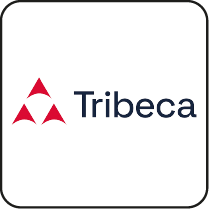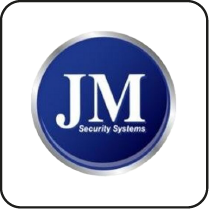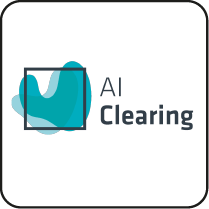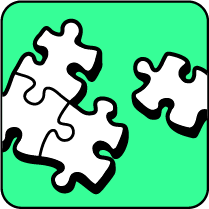ISO 9001, Clause 8.3 Explained
At ISMS.online, we recognise that the design and development process is the backbone of a robust Quality Management System (QMS). It’s where your vision for quality begins to take shape, transforming customer needs into tangible products or services.
Aligning with Customer Expectations
By integrating design and development into your QMS, you ensure that every product or service not only meets but exceeds customer expectations. This alignment is pivotal, as it directly influences customer satisfaction and loyalty, which are essential for your business’s success and growth.
Technical Planning
Technical planning is the cornerstone of the design and development phase. It allows you to foresee potential challenges and devise strategies to overcome them, ensuring that your QMS is not just compliant but also efficient and effective.
Shaping Future Organisational Activities
The decisions you make during the design and development phase have a lasting impact on your organisation's future. They set the precedent for quality standards and innovation, guiding your team towards continual improvement and excellence.
Remember, at ISMS.online, we're here to support you in embedding these critical processes into your QMS, ensuring that you're well-equipped to meet the rigorous standards of ISO 9001:2015.
Book a demoApplicability Across Industries
The design and development process outlined in ISO 9001:2015’s Clause 8.3 is meticulously crafted to be adaptable across a multitude of sectors. At ISMS.online, we understand that each industry has its unique challenges and requirements, and we’re here to guide you through tailoring these processes to fit your specific needs.
Scalability Across Different Sectors
Whether you’re in manufacturing, healthcare, or IT, the principles of design and development remain consistent. They provide a framework that is flexible enough to scale up or down, ensuring that the processes you implement are just as effective for a small startup as they are for a multinational corporation.
Size Irrelevance in Clause 8.3
Your organisation’s size does not diminish the importance of a well-structured design and development process. Clause 8.3 is designed to be inclusive, ensuring that businesses of all sizes can achieve the same level of quality and compliance.
Benefits of a Standardised Process
By adopting a standardised approach to design and development, industries can streamline their operations, reduce errors, and increase efficiency. This standardisation also facilitates easier compliance with international regulations and enhances the ability to compete in global markets.
Catering to Product and Service-Oriented Organisations
Clause 8.3 is not limited to physical products; it is equally applicable to service-oriented organisations. It ensures that the services you develop meet the same high standards of quality and customer satisfaction as tangible products. With our platform, you can seamlessly integrate these standards into your QMS, regardless of your industry or the nature of your offerings.

ISO 9001 made easy
An 81% Headstart from day one
We’ve done the hard work for you, giving you an 81% Headstart from the moment you log on. All you have to do is fill in the blanks.

Managing Outsourced Design and Development
Outsourcing design and development can be a strategic move for many organisations. However, it’s crucial to maintain the integrity of your Quality Management System (QMS) when doing so. ISO 9001:2015 has specific requirements under Clause 4.3 to ensure that outsourced processes meet the same high standards as in-house activities.
Ensuring Supplier Adherence to Procedures
To ensure that your suppliers are aligned with your QMS standards, you must:
- Clearly define the design and development requirements in supplier contracts.
- Establish a robust supplier evaluation and selection process.
- Conduct regular supplier audits to verify adherence to specified procedures.
Demonstrating Compliance with ISO 9001 Requirements
As evidence of compliance, you should maintain:
- Detailed records of supplier qualifications, agreements, and performance evaluations.
- Documentation of the design and development process, including reviews and approvals.
- Traceability records linking outsourced work to your QMS controls and outputs.
ISMS.online: Streamlining Outsourced Design Management
At ISMS.online, we provide tools that facilitate the management of outsourced design, such as:
- Supplier management modules to track and evaluate supplier performance.
- Document control systems to ensure all necessary evidence is readily available and up-to-date.
- Audit management features to schedule, conduct, and record supplier audits efficiently.
By leveraging our platform, you can confidently manage outsourced design and development, ensuring that every aspect of your QMS reflects the excellence your customers expect.
Exclusions and Cautions in Design and Development
When implementing ISO 9001:2015, you may encounter situations where excluding design and development activities from your QMS seems viable. However, this decision should not be taken lightly.
Circumstances for Design Exclusion
Design activities can be excluded from the QMS under specific conditions:
- When your organisation does not engage in the design of products or services.
- If design is not a part of your core business processes or does not affect conformity to product requirements.
Service Businesses and Design Exclusion
Service businesses should be particularly cautious about excluding design because:
- The design often directly impacts service delivery and customer satisfaction.
- Excluding design can overlook potential improvements in service quality and innovation.
Risks of Design Exclusion
Excluding design activities can pose risks, such as:
- Missing opportunities for product or service differentiation and enhancement.
- Potential non-conformities in customer requirements not being adequately addressed.
Assessing Design Inclusion
To assess whether to include or exclude design and development, consider:
- The nature of your products or services and their impact on customer satisfaction.
- Your organisation’s strategic objectives and the role of design in achieving them.
At ISMS.online, we can help you evaluate your design and development needs and ensure that your QMS is comprehensive and aligned with ISO 9001:2015 standards.

Manage all your compliance, all in one place
ISMS.online supports over 100 standards and regulations, giving you a single platform for all your compliance needs.

Contextual Factors Influence
Understanding the context in which your organisation operates is fundamental to the design and development process within your QMS. At ISMS.online, we emphasise the importance of considering both internal and external factors that can significantly impact your approach to design and development.
The Impact of Internal and External Factors
Internal factors such as your organisation’s culture, resources, and capabilities can shape the design process, while external factors like market trends, customer needs, and regulatory requirements can dictate the direction of development. recognising these influences is crucial for creating products and services that are not only compliant but also competitive and relevant in the market.
Role of Stakeholders and Interested Parties
Stakeholders and interested parties, ranging from customers and suppliers to regulatory bodies, play a pivotal role in design and development. Their needs and expectations must be understood and considered to ensure that the end result meets or exceeds their requirements, thereby enhancing customer satisfaction and stakeholder engagement.
Aligning with the Company’s Scope
Aligning design and development activities with your company’s scope ensures that your efforts are directed towards achieving strategic objectives. It also ensures that the resources are optimised, and the activities are within the capabilities of your organisation.
Influence on Certification Goals
The context of your organisation directly influences your certification goals. By aligning design and development with these goals, you ensure a smoother path to ISO 9001:2015 certification. Our platform provides the tools and guidance necessary to navigate these contextual factors effectively, supporting your journey towards achieving and maintaining ISO certification.
Planning for Design and Development
Effective planning is the cornerstone of successful design and development within a Quality Management System (QMS). At ISMS.online, we understand that the foundation of robust planning lies in the careful consideration of resources and the complexity of the tasks at hand.
Essential Resources for Effective Planning
To ensure that your design and development planning is effective, you’ll need:
- Skilled Personnel: A team with the right expertise and experience.
- Technological Tools: Software and hardware that facilitate design and development.
- Financial Investment: Budget allocation for all stages of the design and development process.
- Time: Adequate scheduling to allow for thorough planning and execution.
Assessing Complexity in the Planning Stage
Assessing complexity involves:
- Scope Evaluation: Determining the breadth and depth of the project.
- Risk Analysis: Identifying potential challenges and their impact.
- Resource Allocation: Ensuring that the resources match the project’s demands.
The Critical Role of Documentation
Documentation is vital because it:
- Provides a clear roadmap for the design and development process.
- Ensures traceability and accountability at every stage.
- Facilitates communication among all stakeholders.
Streamlining with ISMS.online
Our platform assists in streamlining the planning process by:
- Offering templates and tools for project management.
- Providing a centralised system for documentation and communication.
- Enabling easy access to resources and records for all team members.
By leveraging ISMS.online, you can ensure that your planning is not only comprehensive but also seamlessly integrated into your QMS.

Free yourself from a mountain of spreadsheets
Embed, expand and scale your compliance, without the mess. IO gives you the resilience and confidence to grow securely.

Translating Customer Requirements
Translating customer requirements into design inputs is a critical step in the ISO 9001:2015 design and development process. At ISMS.online, we understand that this translation is not just about meeting specifications; it’s about capturing the essence of customer needs to deliver value.
Translating Customer Needs into Design Inputs
To translate customer requirements effectively, you need to:
- Engage with customers to understand their expectations thoroughly.
- Break down complex requirements into actionable design criteria.
- Ensure that every input reflects the customer’s voice and the end-user’s experience.
Functional and Legal Considerations
Functional and legal aspects play a pivotal role in shaping design inputs. They ensure that:
- The design is feasible and practical for the intended use.
- All legal and regulatory requirements are met, avoiding costly compliance issues.
The Imperative of Comprehensive Input Coverage
Comprehensive coverage of inputs is essential because it:
- Ensures that no critical customer need or regulatory requirement is overlooked.
- Lays a solid foundation for the design, reducing the need for costly revisions later.
Ensuring Comprehensive Coverage with ISMS.online
Our platform aids in ensuring comprehensive input coverage by:
- Providing structured templates for capturing and organising inputs.
- Offering collaboration tools for team members to contribute and review inputs.
- Enabling easy integration of customer feedback and regulatory updates into the design process.
With ISMS.online, you can be confident that your design inputs are complete, well-organised, and aligned with both customer expectations and compliance requirements.
Further Reading
Establishing Controls in the Design Process
In the realm of ISO 9001:2015, establishing robust controls throughout the design and development process is non-negotiable. At ISMS.online, we provide the framework and tools necessary to ensure that your management controls are not only in place but are also effective and efficient.
Necessity of Management Controls
Management controls are essential for:
- Guiding the Design Process: They provide a structured approach to managing the various stages of design and development.
- Ensuring Quality: Controls help maintain the integrity of the design, ensuring that the final product or service meets the required quality standards.
- Compliance: They ensure that the design process is compliant with ISO 9001:2015 and other relevant standards.
Conducting Design Reviews, Verification, and Validation
To conduct thorough design reviews, verification, and validation, you must:
- Implement a systematic review process at predetermined stages of design development.
- Employ verification techniques to confirm that design outputs meet the design inputs.
- Validate the final product or service to ensure it fulfils intended use requirements.
The Importance of Issue Prevention
Issue prevention is a key aspect of design controls because it:
- Reduces the likelihood of non-conformities and defects.
- Minimises the need for rework, saving time and resources.
- Enhances customer satisfaction by delivering products and services that are right the first time.
Minimising Surprises with ISMS.online
Our platform, ISMS.online, helps in minimising surprises through:
- Automated workflows that ensure all necessary reviews and checks are completed.
- Documentation control that maintains a clear audit trail of all design activities.
- Risk management tools that help predict and prevent issues before they arise.
By utilising ISMS.online, you’re equipping your organisation with the means to establish a proactive and controlled design process, ensuring that quality is built into every stage of your product or service development.
Measuring Success Through Design Outputs
In the journey of aligning your Quality Management System (QMS) with ISO 9001:2015 standards, measuring the success of design outputs against inputs is a critical step. At ISMS.online, we provide the tools and guidance to ensure that this alignment not only meets but exceeds the required benchmarks.
Criteria for Defining Success in Design Outputs
Success in design outputs can be defined by several criteria:
- Conformity to Customer Requirements: Ensuring that the final product or service meets the specifications and expectations outlined by the customer.
- Regulatory Compliance: Adhering to all relevant legal and industry-specific standards.
- Performance Metrics: Meeting predefined performance and reliability standards.
Ensuring Compliance and Customer Satisfaction
To ensure compliance and customer satisfaction, you should:
- Implement rigorous testing and quality assurance protocols.
- Engage in continuous feedback loops with customers to refine the product or service.
- Maintain comprehensive documentation throughout the design and development process.
ISMS.online: Supporting the Alignment of Outputs with Inputs
Our platform supports the alignment of outputs with inputs through:
- Integrated Management Tools: To track the progression from design inputs to outputs.
- Quality Assurance Features: To automate the verification and validation processes.
- Customer Feedback Systems: To capture and integrate customer insights directly into the design process.
By leveraging the capabilities of ISMS.online, you can confidently measure and demonstrate the success of your design outputs, ensuring they are a true reflection of the initial design inputs and customer expectations.
Change Management in Design and Development
Change is an inevitable part of the design and development process. At ISMS.online, we understand that accommodating change requests efficiently while maintaining compliance with ISO 9001:2015 is crucial for the continuous improvement of your products and services.
Accommodating Change Requests
When change requests arise, they should be:
- Evaluated for impact on the current design and development phase.
- Approved by the relevant authorities within your organisation.
- Implemented in a controlled manner to prevent unintended consequences.
Documentation for Managing Changes
Effective change management requires meticulous documentation, including:
- Change Requests: Recording the details of what is being changed and why.
- Impact Assessments: Documenting how the change will affect the existing system.
- Approval Records: Keeping track of who authorised the change and when.
The Role of Risk Management
Risk management is integral to change management because it:
- Identifies Potential Issues: Before they become actual problems.
- Ensures Controlled Implementation: Minimising disruptions to the development process.
- Maintains Compliance: With ISO 9001:2015 throughout the change process.
Streamlining Change Management with ISMS.online
Our platform streamlines your change management processes by providing:
- Structured Workflows: To guide you through each step of managing changes.
- Integrated Documentation Tools: Ensuring all change records are easily accessible and up-to-date.
- Risk Management Features: To assess and mitigate risks associated with changes.
By utilising ISMS.online, you can ensure that your change management process is as smooth and efficient as possible, keeping your design and development activities aligned with ISO standards and business objectives.









